Crime
Wisconsin Ranked Second in Nation for Black Homicide Rate
MILWAUKEE COURIER — Wisconsin has been called many things, including the state of one of the most segregated cities in the nation. Earlier this week, Wisconsin was ranked second in the nation for the number of black homicide victims.
By Ana Martinez-Ortiz
Wisconsin has been called many things, including the state of one of the most segregated cities in the nation. Earlier this week, Wisconsin was ranked second in the nation for the number of black homicide victims.
The Violence Policy Center (VPC) conducts an annual study: The Black Homicide Victimization in the United States. This year’s study, An Analysis of 2016 Homicide Data examined unpublished data from the FBI’s Supplementary Homicide Report.
While the study has been going on for 13 years, this is the sixth year in row that Wisconsin has ranked among the 10 states with the highest black victimization rates, according to the press release.
Wisconsin’s homicide rate is 37.57 per 100,000, which almost twice the national rate. Missouri, which was ranked number one had a homicide rate of 46.21 per 100,000. Following Wisconsin, the remaining states included West Virginia, Illinois, Indiana, Kentucky, Michigan, Tennessee, Louisiana and Pennsylvania.
Josh Sugarmann, the VPC executive director, said this study and victim’s families should provoke an outcry for change. He added that the goal of the report is to educate the public and policymakers in the hopes that it’ll make a change and put an end to this ongoing crisis.
In 2016 in Wisconsin, 144 black persons were victims of a homicide, 124 were male and 20 were female. The average age was 31-years-old, but 6 percent of victims were under 18 and two percent were 65 and older.
The report also found that 91 percent of the victims were killed by guns and of that, 75 percent were killed by handguns.
“In all parts of our country, people of color are disproportionately affected by gun violence,” said Jeri Bonavia, executive director of WAVE Educational Fund. “But this study highlights just how much work Wisconsin needs to do and just how essential it is that we do that work immediately.”
In the entirety of the United States, the study reported that 7,765 black people were homicide victims. Black people make up 13 percent of the population but accounted for 51 percent of the deaths.
The homicide victimization rate for black is 20.44 per 100,000 compared to the 2.96 homicide victimization rate for whites. Furthermore, the press release stated “Nationwide, 87 percent of black homicide victims were killed with guns.”
“The devastating and disproportionate impact homicide, almost always involving a gun, has on black men, boys, women, and girls in America is a national shame,” said Sugarmann.
This article originally appeared in the Milwaukee Courier.
Activism
Oakland Post: Week of November 26 – December 2, 2025
The printed Weekly Edition of the Oakland Post: Week of November 26 – December 2, 2025
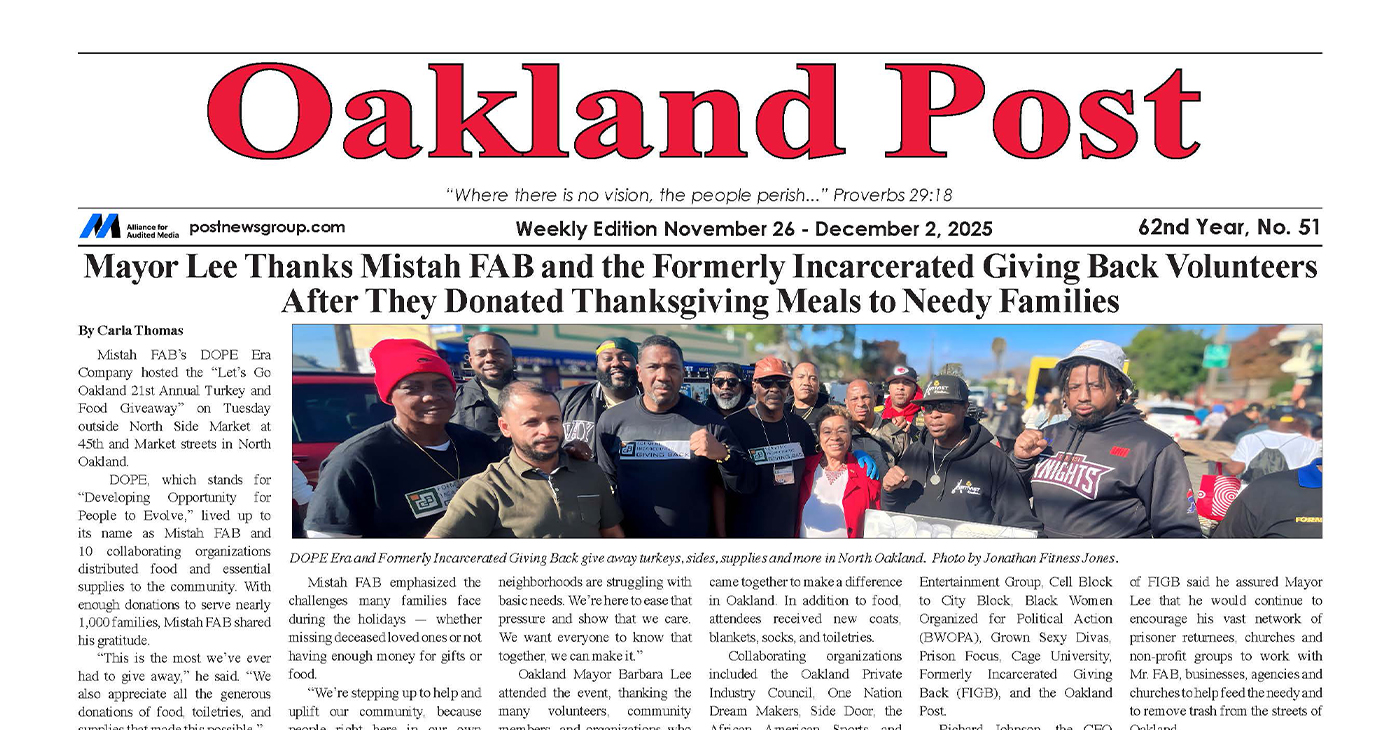
To enlarge your view of this issue, use the slider, magnifying glass icon or full page icon in the lower right corner of the browser window.
Activism
Oakland Post: Week of November 19 – 25, 2025
The printed Weekly Edition of the Oakland Post: Week of November 19 – 25, 2025
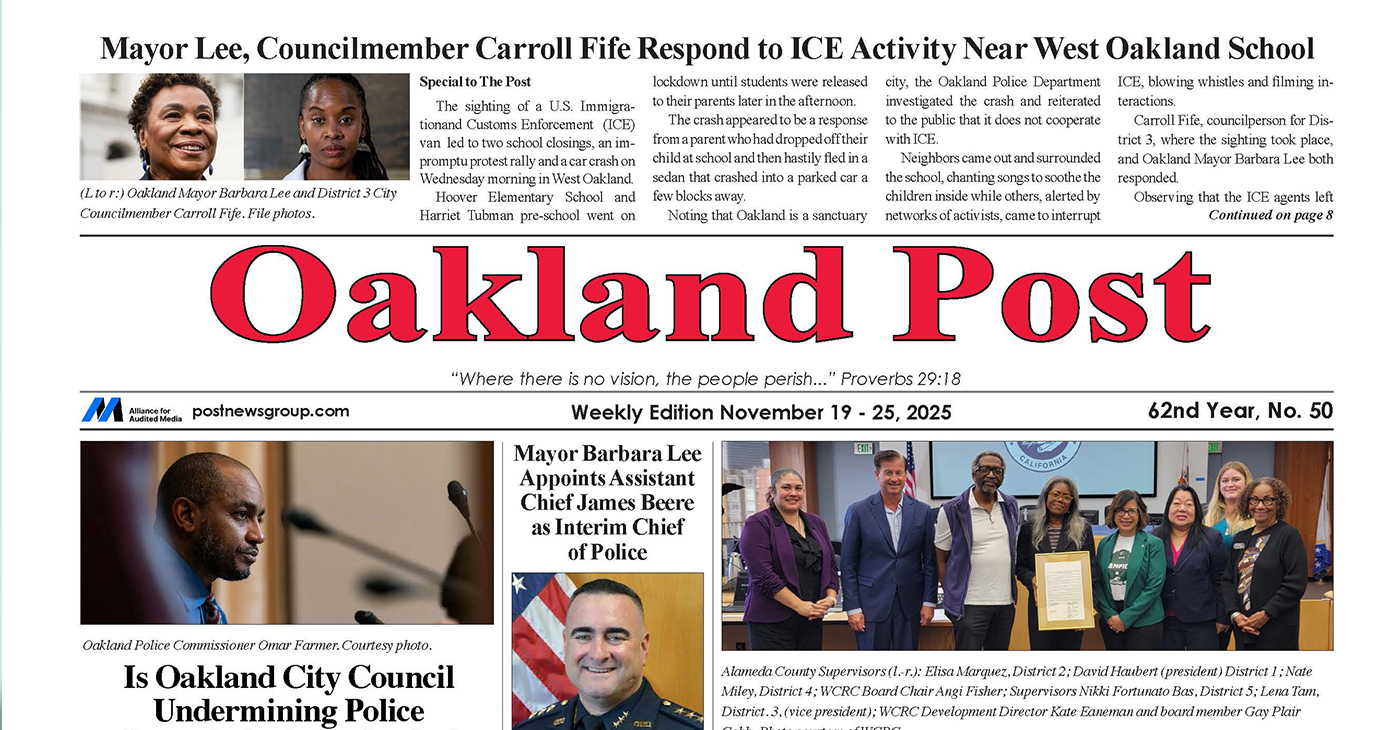
To enlarge your view of this issue, use the slider, magnifying glass icon or full page icon in the lower right corner of the browser window.
Activism
Oakland Post: Week of November 12 – 18, 2025
The printed Weekly Edition of the Oakland Post: Week of November 12 – 18, 2025

To enlarge your view of this issue, use the slider, magnifying glass icon or full page icon in the lower right corner of the browser window.
-
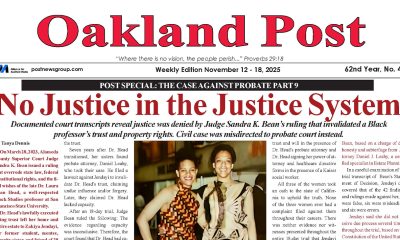
 Activism4 weeks ago
Activism4 weeks agoOakland Post: Week of November 12 – 18, 2025
-

 Activism3 weeks ago
Activism3 weeks agoIN MEMORIAM: William ‘Bill’ Patterson, 94
-

 Activism3 weeks ago
Activism3 weeks agoHow Charles R. Drew University Navigated More Than $20 Million in Fed Cuts – Still Prioritizing Students and Community Health
-

 Bay Area3 weeks ago
Bay Area3 weeks agoNo Justice in the Justice System
-

 #NNPA BlackPress3 weeks ago
#NNPA BlackPress3 weeks agoLewis Hamilton set to start LAST in Saturday Night’s Las Vegas Grand Prix
-

 #NNPA BlackPress2 weeks ago
#NNPA BlackPress2 weeks agoBeyoncé and Jay-Z make rare public appearance with Lewis Hamilton at Las Vegas Grand Prix
-
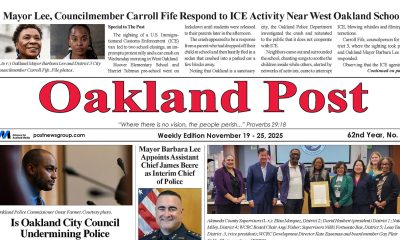
 Activism2 weeks ago
Activism2 weeks agoOakland Post: Week of November 19 – 25, 2025
-

 #NNPA BlackPress4 weeks ago
#NNPA BlackPress4 weeks agoThe Perfumed Hand of Hypocrisy: Trump Hosted Former Terror Suspect While America Condemns a Muslim Mayor


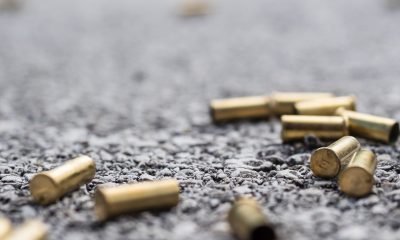





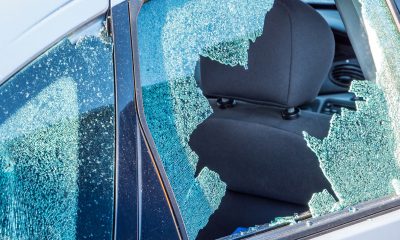



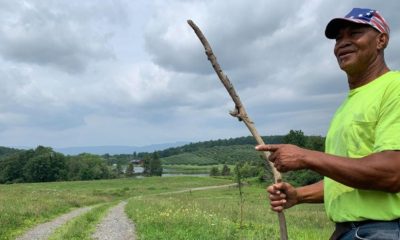













































2 Comments